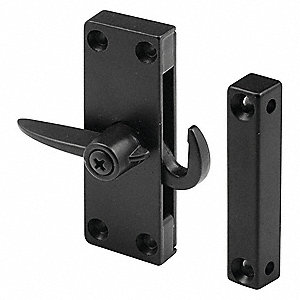The wife and I canvased the roof and then primered the whole top on the outside (and most of the inside)

Glued the metal "trim" on the bottom (GG CA)

The trim came out a bit wobbly

With a little more glue and clamping it was better but not perfect

Rinse and repeat for the top (hopefully slightly better)

Then door construction began


I ended up having to trim it (measure 3 times and still cut twice)


Next I made one of the biggest
mistakes of the project.
I used the lightweight spackle to try to make my seams look better and they did look somewhat better but the finish ended up looking weird.
The main problem I faced is after painting everywhere with the spackle under the paint bubbled. I plan on sanding and repainting next year but I may have to sand all the spackle off to fix the problem. Please do some testing before you try this with your camper. Or play it safe and just put some effort into making your seams look presentable.
I'm not saying the product is bad I'm just saying that between the product and it application by me for the purpose of smoothing went terribly wrong somewhere.

I spent almost a whole week of mornings and after works spackling sanding and spackling again. I waited 3 days after spackling before painting but that may not have been long enough for things to completely dry. It went on pretty thick in some spots.
Finished spackling and trying to mock up the window that I decided was too big.

First coat of paint. Made me think of calling it "The turtle"

Then began work on the lift system since the top was now so heavy that my father and I had some difficulties.
The general idea of the lift system is a main crank axle that drives four cables that go through the floor of the camper through pulleys in the lower walls and down to attachment lift points in the upper section.

The pulleys I found at grainger and they are pretty specific. They have a 2" diameter at the cable interface and are 2 1/2" in diameter all together. Since my plan was to only have a 1/2" gap between layers that left me with 1/4" wiggle room. and with the pulley being 2" it kept the cable as close as possible to the wall faces without touching it.

I used some 2" steal flatbar to mount the four pulleys too and trimmed the screws off the back. This made it so I could hang the pulley in the wall. The reason I didn't want to put the pulley the other way is I was afraid of the cable jumping the pulley and then cutting through the foam.

I carefully cut holes for the pulleys in the wall directly over where I planned on putting my cable "axles"

The pulleys are just friction fit in the slots because there is very little horizontal force on them at any time.

To pass the cable through the floor of the camper I made bushings out of pipe nipples and caps with holes drilled through to feed the cable.


I used large washers to take up any extra length of the nipples and spread the load in case the cable tried to move the nipple in the foam.

Crank axles were installed under the trailer using eyebolts as bushings and 3/4 EMT conduit (replaced later with 1/2" galvanized plumbing pipe)
The wire ropes were spliced into a flemish eye before being attached.

For the lift points on the camper installed earlier. Holes were drilled above where the lift axles were going and Large bolts and washers were installed with the cables attached.

The other end of the cable was attached through holes drilled in the crank axles using knots but eventually I replaced the knots with wire rope clips which made them easier to adjust.
My first iteration of the lift system cranks did not go to plan. My idea of a drive cable pre wrapped around the rear axle led to problems with syncing the lift front to back. I learned that due to the small circumference of my cranks the 1/8" cable overlapping on itself could make a difference of up to 8" during the lift which would make things jam.

Unfortunately one of the bad lifts led to damage to the front from pulley points. The combination of the front lifting the whole weight, the upper section jamming, and a 200lb guerrilla running the crank led to this:

If I were to do it again I would probably embed long wood members in the wall possibly supported to the frame before canvasing. Everything still works fine but it has made things ugly.
My solution to the problem was to simplify a little and eliminate the "drive cables" that were supposed to spin the rear axle. I instead lengthened the cables to the rear lifts and use the rear axle as a really wide pulley instead. When I redesigned it I also made sure that the attachment points on the crank axle were offset from where to cable came down to it making it so the cable was slightly angled during the lift and spooled nicely onto the crank axle instead of overlapping onto themselves causing out of sync lifting.

This video shows how the rear cables now redirect and spool nicely onto the front crank axle.

And here is one of the very first "good" lifts of the camper. I was quite excited.









 Great Job !!!
Great Job !!!